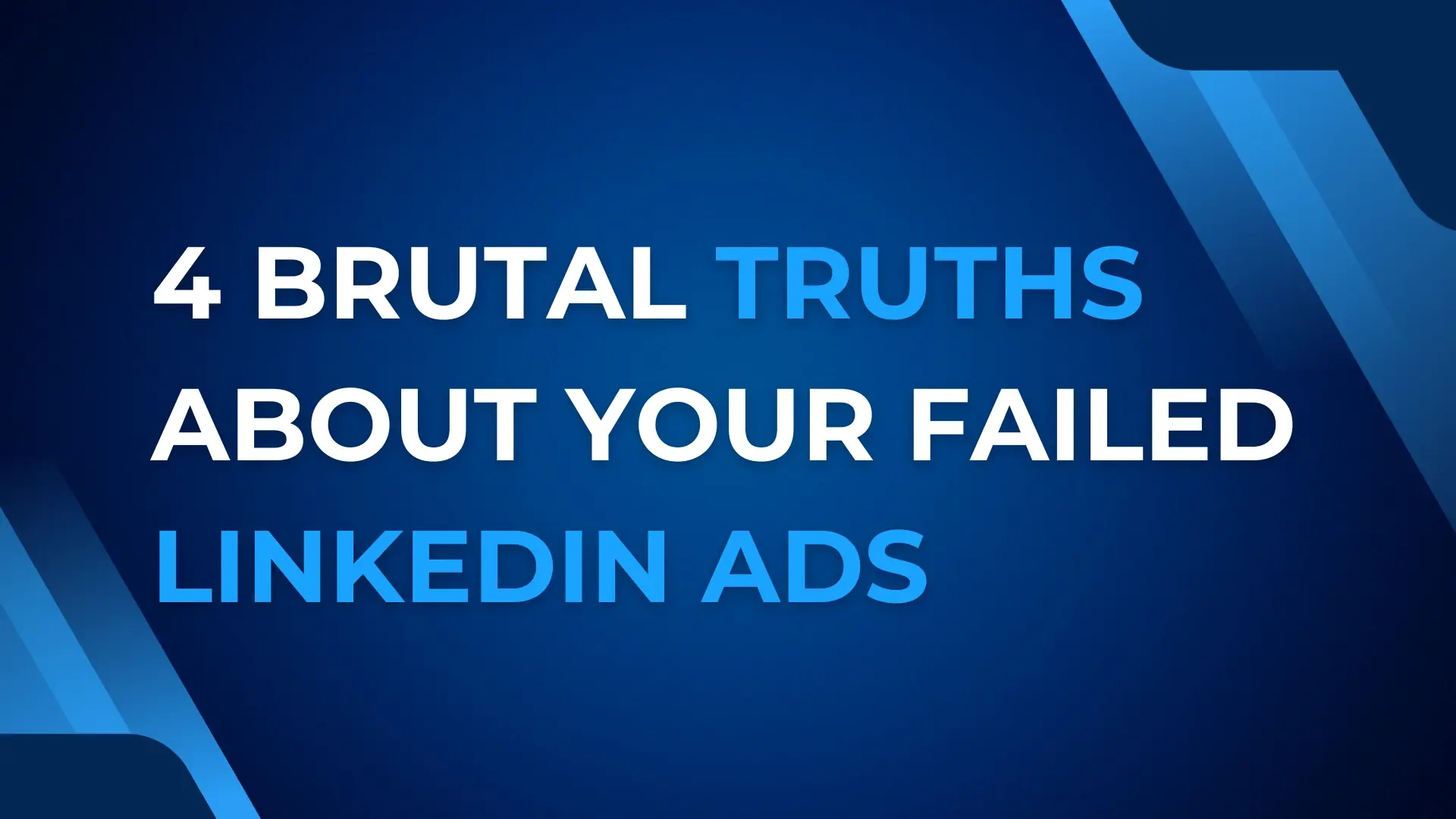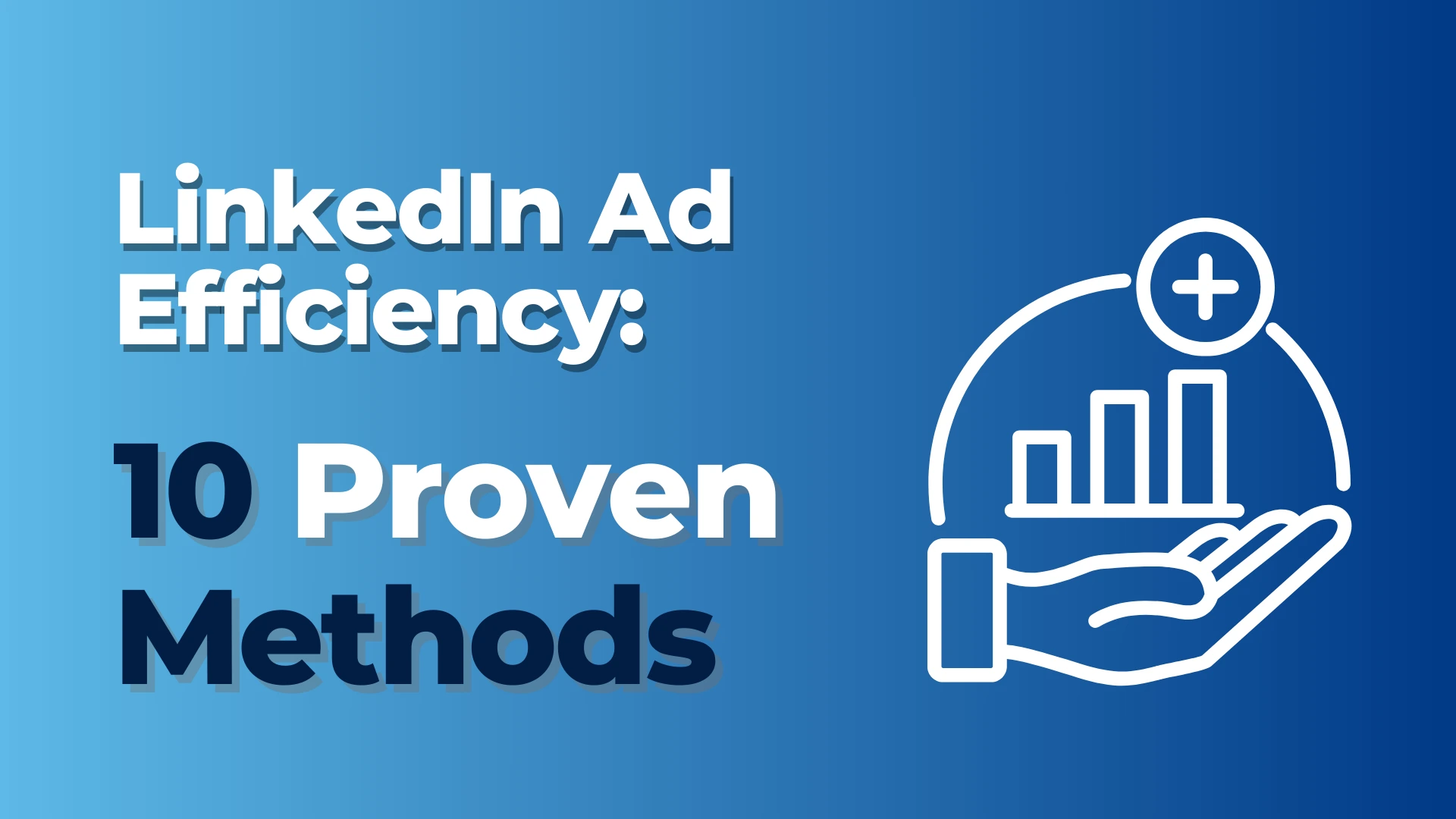
Most LinkedIn Ad campaigns fail because they’re too generic. Here’s how to fix that.
Step 1: Get Ridiculously Specific About Your Target
Generic messaging gets ignored. Always.
If I shouted “Hey you!” in a crowded room, would you turn around? But if I shouted “[YOUR EXACT JOB TITLE] struggling with [YOUR EXACT PROBLEM]!” – you’d snap your head around instantly.
This is why most LinkedIn ads suck. They try to speak to everyone, and end up speaking to no-one.
How do I find my perfect target?
- Analyze your top 20% of customers who bring 80% of value.
- Interview them about their pain points (use their exact words in ads).
- Keep note of the buyer’s journey and their decision making process.
- Map out who/what influences their purchasing decisions.
- Find out where they actually spend time online.
One client discovered 80% of their best customers came from just two specific industries. We focused all ad spend there. Their pipeline exploded within 30 days.
Step 2: Create Content That Actually Helps People
Nobody cares about your product features.
What they do care about is your product solving their problems.
The best LinkedIn ads don’t sell, they help. They educate. They build trust.
I worked with a SaaS company running product demo ads to completely cold audiences. Absolute waste of money and resources.
We switched to boosting genuinely educational content that helped their target audience solve problems, and all of that without actually mentioning their product. Crazy, right?
What was the result of this little endeavor? 3x more engagement, 5x more saved posts, and 2x more demo requests from people who actually watched them.
Map your content to five awareness stages:
- Unaware (they don’t know they have a problem)
- Problem Aware (they know the problem but not solutions)
- Solution Aware (they know solutions exist)
- Product Aware (they know your product exists)
- Most Aware (they know your product but need to be convinced)
Most companies today only create content for stages 4-5. The real magic happens in 1-3.
One of my clients created a ROI calculator that showed prospects they were losing $230K annually through inefficiency. No pitch, just basic math. That single piece of content generated 43 qualified leads in a single month.
Step 3: Repurpose Like Crazy and Learn Fast
One good piece of content should spawn at least 10 others.
Take a 30-minute expert interview and turn it into a long-form article, LinkedIn posts, video clips, an infographic, and a checklist.
This creates “content velocity” without killing yourself.
I do this every other week. It takes me about 3 hours to make a podcast, then another 3 hours to repurpose that into 10+ pieces of content.
Boost these different formats on LinkedIn. Learn fast which messages work best.
One of our clients noticed that their audience engaged 10x more with customer stories than they did with how-to content. We then changed all new content to focus on transformation stories and saw engagement rates double overnight.
Stupid Yet Critical Error Most People Make
Keep in mind that LinkedIn isn’t a billboard, so stop treating it as such.
Instead of that, you should focus on having conversations and building relationships with people.
Try to respond to every comment you get. Engage with the people who engage with you.
To sum up:
Get super specific about who you’re targeting.
Create content that actually helps them.
Repurpose ruthlessly and learn what works.
Have actual conversations with people who engage.
This is only a snippet of the content you can find in our free guide & playbook. If you’re interested in the best LinkedIn ads practices for 2025, take a look here.





